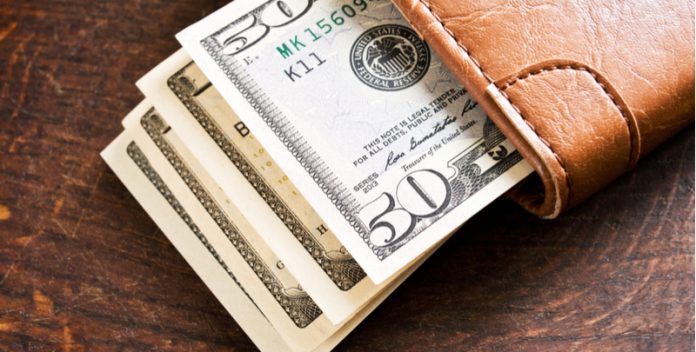The dollar continued to rise on Monday as investors increased their expectations of a more aggressive Federal Reserve. The stronger dollar pulled the pound US dollar exchange rate to a low of US$1.3927. This is the lowest that the rate has traded at in 5 weeks.
| What do these figures mean? |
|---|
|
When measuring the value of a pair of currencies, one set equals 1 unit and the other shows the current equivalent. As the market moves, the amount will vary from minute to minute. For example, it could be written: 1 GBP = 1.28934 USD Here, £1 is equivalent to approximately $1.29. This specifically measures the pound’s worth against the dollar. If the US dollar amount increases in this pairing, it’s positive for the pound. Or, if you were looking at it the other way around: 1 USD = 0.77786 GBP In this example, $1 is equivalent to approximately £0.78. This measures the US dollar’s worth versus the British pound. If the sterling number gets larger, it’s good news for the dollar. |
Investors continued to digest the more conservative tone from the Bank of England (BoE) governor Mark Carney last week. This came following a week of high impacting data, which was weaker than analysts had forecast. UK wage growth remained constant rather than ticking higher; inflation eased closer towards the central banks 2% target and retail sales dropped heavily. A hat-trick of disappointment for pound traders and with no other UK economic data released on Monday, market participants continued to dwell on these forecast missing numbers.
Today investors will look towards UK government borrowing figures for further clues as to the health of the UK economy. Analysts are anticipating that net borrowing will show a drop from £0.27 billion surplus to -£1.2 billion decline. Should this be true, then confidence towards the outlook of the UK economy could dampen, potentially dragging the pound even lower versus the US dollar. On the contrary, a stronger figure could help lift the pound.
| Why does poor economic data drag on a country’s currency? |
|---|
| Slowing economic indicators point to a slowing economy. Weak economies have weaker currencies because institutions look to reduce investments in countries where growth prospects are low and then transfer money to countries with higher growth prospects. These institutions sell out of their investment and the local currency, thus increasing supply of the currency and pushing down the money’s worth. So, when a country or region has poor economic news, the value of the currency tends to fall. |
Dollar Rallies On Higher Interest Rate Expectations
The US dollar has been rallying for the previous few sessions in parallel to easing geopolitical fears and increasing interest rate expectations. A rally in commodity prices, which are dollar dominated, has increased market expectations of higher inflation in the US. This, in turn, is boosting expectations of the Federal Reserve having to take a more aggressive path to monetary policy, possibly hiking interest rates more than initially planned. As the interest rate expectation has increased so has the value of the dollar.
| Why do raised interest rates boost a currency’s value? |
|---|
| Interest rates are key to understanding exchange rate movements. Those who have large sums of money to invest want the highest return on their investments. Higher interest rate environments tend to offer higher yields. So, if the interest rate or at least the interest rate expectation of a country is relatively higher compared to another, then it attracts more foreign capital investment. Large corporations and investors need local currency to invest. More local currency used then boosts the demand of that currency, pushing the value higher. |
Today investors will be watch the release of the US consumer confidence index. The index dropped in March to 127.7, from an 18 year high of 130 in February. Analysts are forecasting that confidence will haver dropped again in April in light of trade war fears and geopolitical concerns regarding the US souring relations with Russian. A fall in consumer confidence could weigh on sentiment for the dollar, however the impact may be limited given that confidence is still hovering close to a multi decade high.
|
This article was initially published on TransferWise.com from the same author. The content at Currency Live is the sole opinion of the authors and in no way reflects the views of TransferWise Inc. |





